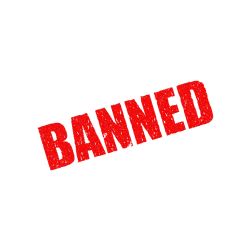“Products that can’t be made safe can be banned,” said Commissioner Richard Trumka Jr. Are these words just a moment when Commissioner Trumka “got out in front of his skis?” Or, as others have depicted this, a moment when the mask slipped, and the real agenda was transiently exposed?
This is not the first time US Consumer Product Safety Commissioner Trumka offered this approach. Here is a YouTube video of him in a conversation with the Public Interest Research Group about one month ago. The current 500+ views of his remarks on YouTube have been amplified manyfold since the Bloomberg article raised the specter of banning gas stoves.
What especially caught my attention was the word safe. Oxford Languages, the dictionary underlying Google, provides this definition for safety:
“The condition of being protected from or unlikely to cause danger, risk, or injury.”
The Oxford English Dictionary offers 13 definitions; this is the most germane,
“Presenting no risk of physical harm; posing no threat, not dangerous.”
Do you see the distinction? The second definition is definitive: "no threat,” while the operative condition in the first definition is “unlikely to cause.” In this subtle distinction, we find much of the discourse over regulatory science.
For decades now, the prime directive of regulators comes from our study of the harms of radiation, the Linear Non-Threshold Model (LNM). Simply put, it posits that there is no threshold below which there is acceptable exposure to risk; any degree of risk is unacceptable. One of the problems with this approach is that our technology is increasingly able to measure ever-smaller levels of threats, be it particulate matter, NO2, or CO in the case of gas stoves or pesticide levels in foods.
Particulate matter is a good example. Its presence can sometimes be seen with the naked eye. In 1703, smaller particulate matter was identified with a microscope. By 1936 particulate matter could be filtered to a size of 10 microns (0.000001 meters or roughly the size of a red blood cell). PM10 became the EPA’s National Ambient Air Quality Standard (NAAQS) in 1987, replacing the much larger Total Suspended particles. PM2.5 were identified in the mid-1980s; they are 0.00000025 meters or roughly the size of a Coccus bacteria). PM2.5 became the EPA’s National Ambient Air Quality Standard (NAAQS) in 1997.
As our technology for measurements improves, we find chemicals and particles that weren't detectable previously. They were not necessarily absent, but as the saying goes, if it can’t be measured, it can’t be counted.
The logical conclusion of applying the LNM model of risk and the technological advancement of measurement is that nearly everything, in the words of Commissioner Trumka, “can’t be made safe.”
A moment’s reflection identifies a host of products that already can’t be made safe.
- Tobacco – 480,000 annual deaths
Alcohol– forget that one; we already tried banning it, and that didn’t work out- Cars – 38,824 annual deaths
- Planes – 50 in 2009, the last year we recorded a fatal plane crash in the US [1]
Commissioner Trumka did not call for a ban on tobacco which is 100-fold more lethal than gas stoves which allegedly are responsible for 13% of the 3,500 annual asthma deaths. If consumer safety is really the true North, let’s move on tobacco.
Those airline deaths speak to the first definition of safety, which involves the word “unlikely.” That definition is, to my mind, more of a real-world case, a world where sh** happens, if for no other reason than “random luck.” If we were to view product safety as a tradeoff, accepting some small risk, there would have been no need for the Consumer Product Safety Commission Chairman, Hoehn-Saric, to write,
“To be clear, I am not looking to ban gas stoves and the CPSC has no proceeding to do so.”
As long as regulators stubbornly hold the Linear No-threshold model as our only safe model to assess risk, we will, “out of an abundance of caution,” continue to consider banning products that have quantifiably small risks. It would also help if the legislators and regulators met their fiduciary responsibility to their employers - the citizens of the US, to read, understand and consider the underlying science rather than settle for a staff briefing and a theater of testimony.
[1] “Colgan Air Flight 3407 crashed near Buffalo, New York, killing all 49 on board and a person on the ground.”

